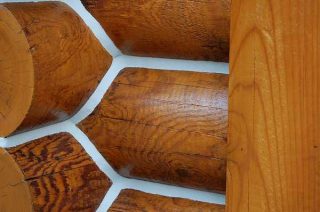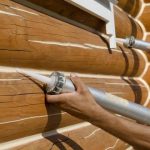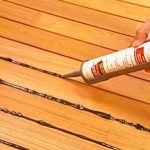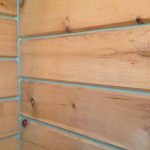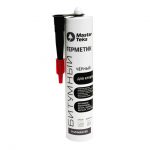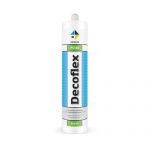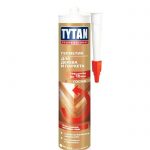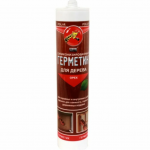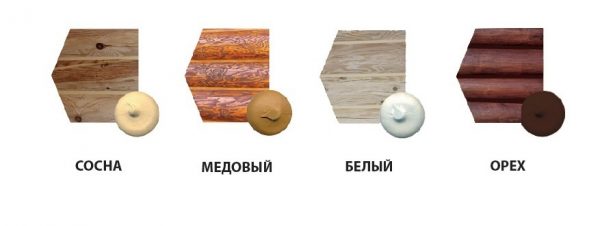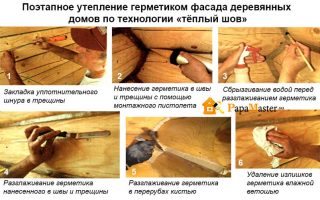Sealant is a special material based on polymers or oligomers. Its task is to prevent leakage of the working medium, seal the connection or waterproof it. Since such operations are required when working with different materials, they produce different options: a sealant for a bar, a composition for metal, a mixture for plastics.
Description of wood sealants
Wood is influenced by external factors. This is explained by its structure. The material consists of wood fibers directed mainly in one direction. This structure allows the wood to absorb moisture from too humid air, conduct it inside itself and remove it into drier air. The process runs in both directions. therefore it is never too damp and too hot in a log house or a house made of timber.
The absorption of moisture is accompanied by swelling, the more intense, the more moisture the tree absorbs. Withdrawal is accompanied by a decrease in volume. If the processes go too abruptly and quickly, the tree dries up, becomes covered with cracks, additional cracks appear between individual elements - bars or logs.
Conventional sealants completely stop moisture from entering the material. In a wooden house, this is unacceptable: in the absence of moisture, the wood dries up.
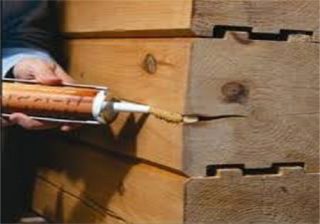
A wood sealant must have the following qualities:
- vapor permeability - the material must allow air and water vapor to pass through;
- resistance to sun and water, especially if it is used to seal the joints between the joints;
- resistance to microorganisms - mold, fungi, rotting;
- elasticity - wood changes in volume under the influence of temperature and humidity, respectively, fillers and sealants should change in volume in the same way.
The standard option for sealing seams is caulking with felt, tow, moss, tow and other soft fibrous materials. The method is rather laborious. Wood sealant solves the problem faster and more efficiently.
Reasons for using
- Sealing window and faithful blocks - there are always gaps between the frame and the wall or casing. Wood sealant fills them without forming a solid structure.
- Special inter-block sealant for the log house is used instead of tow or jute for caulking... It will also be used when sealing seams in a house from a bar.
- Sealing floor coverings - carried out in wooden and stone houses, as well as sealing of joints on stair structures.
- Compositions are used for sealing joints and seams in the construction of wooden sheathing. The procedure is especially in demand when decorating balconies and loggias, where temperature and moisture changes are greater.
When choosing a sealant, the operating conditions are taken into account. To fill the joints in the bath, not only a vapor-permeable sealant is required, but also a heat-resistant one.
Properties
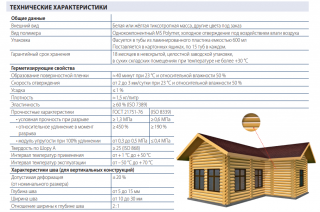
Log sealant differs from the usual in a number of qualities.
- High adhesion to wood - wood is a heterogeneous material. Compounds with too dense and homogeneous structure do not adhere well to such a surface. And too loose are quickly absorbed by the top layer.The special compounds adhere to the raised wood pile, but do not penetrate deep into the wood.
- Sealant fills narrow and wide gaps and polymerizes in a short time, forming a rubbery mass. Such a layer does not allow water to pass through, is not afraid of ultraviolet rays, but at the same time has an elastic structure. It can expand and contract with the wooden structure.
- Waterproofing composition able to withstand stretchingwhich is 300–400% of the original size. It is allowed to use a joint sealant for a log house immediately after the primary shrinkage of the building.
- Sealant prevents water from entering the tree or inside the structure. The water resistance of the composition is almost absolute, but at the same time the material is permeable to water vapor and air.
- Structure keeps warm and does not form cold bridges.

Varieties of compositions
All wood sealants are divided into 2 large groups:
- calculated to eliminate small defects (chips, cracks and technical gaps) or for fixing inactive parts - parquet, plinth, decorative details;
- suture - are used to seal cracks in logs, inter-joint joints, joints in order to protect them from blowing and freezing.
For the first task, sealants are chosen with a shorter period of use, not resistant to heat, one-component and colorless. For sealing large joints, sealants with a high coefficient of thermal expansion, denser and more resistant to mold and mildew are required.
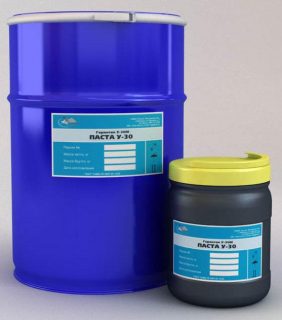
The most common types:
- Silicone wood sealant - waterproof, elastic, very durable - lasts up to 40 years. The composition is resistant to aggressive substances, therefore it is used for both external and internal work. It belongs to the universal, however, it is not suitable for sealing wide gaps - the consumption is too high.
- Acrylic - has good adhesion not only to wood, but also to concrete, plaster and drywall. It does not tolerate temperature changes and is not waterproof enough, since it has a water base. But it is completely fireproof. Acrylic sealant is used inside the building, most often for sealing joints when flooring, wall cladding. It is better to use silicone in the bathroom, since acrylic will fail faster.
- Polyurethane - a fast-hardening compound with excellent adhesion to wood, metal, stone and ceramics. The hardened layer forms a very strong elastic structure, insensitive to changes in temperature, humidity, and sunlight. It is used for sealing ventilation systems, air conditioning, PVC boards, window and door structures.
- Thiokol - extremely durable and resistant to acids, alkalis and solvents. Frost-resistant: operating temperature range from -50 to + 130 ° C. It is more often used in technical facilities.
- Bituminous - the most common mixture for waterproofing piles, foundations, posts, roofs and other wooden structures. Suitable only for external work or for rough flooring inside a building.

Criterias of choice
The choice of wood sealant to create a warm joint or to seal joints in slabs is determined by many factors.
- Appointment - the compositions for external and internal work are different. They are not interchangeable.
- Operating conditions - for a humid room, bath or sauna, you need to take silicone sealants, as they are resistant to water and temperature changes. An acrylic compound is suitable for sealing joints in rough flooring or for wall paneling.
- Expansion ratio - the greater the width and depth of the gap, the more it must expand to fill it. At the same time, the formed structure must be strong and elastic.
- Color - bitumen mastic for wood, for example, is available only in black. It is very rarely used for sealing joints inside a building. To fill the gaps between the logs, it is undesirable to take a standard white composition: the seams are very noticeable and look sloppy. It is better to choose the composition by color, at least approximately.
When choosing, be sure to pay attention to the expiration date. The closer to the end, the more viscous and difficult to use the composition becomes.
Joint sealing technology
- Sealant only a clean and dry surface... There are special compounds for working in the rain.
- If possible gaps and joints are primed... This improves grip and reduces material consumption.
- Deep or too wide slits at first filled with polyethylene rope or other gasket.
- To apply the sealant economically and accurately, use pistols and other attachments.
- When closing the seams, make sure that the composition fills them evenly. The joint is filled depending on the degree of expansion of the sealant during solidification.
In a damp room or when it is raining outside, the sealants take much longer to dry.

